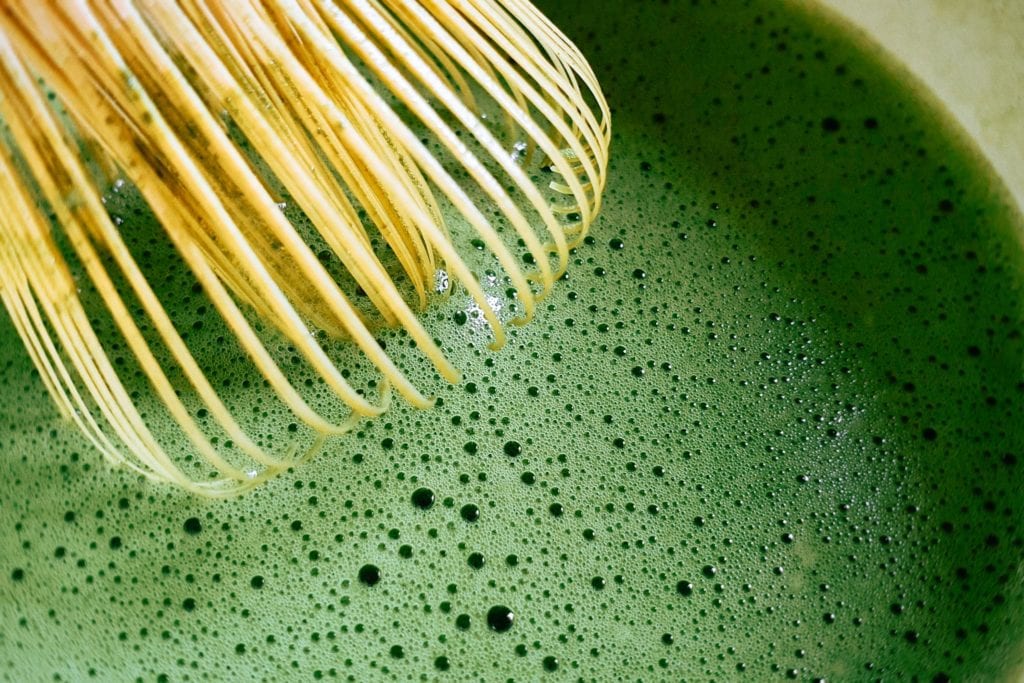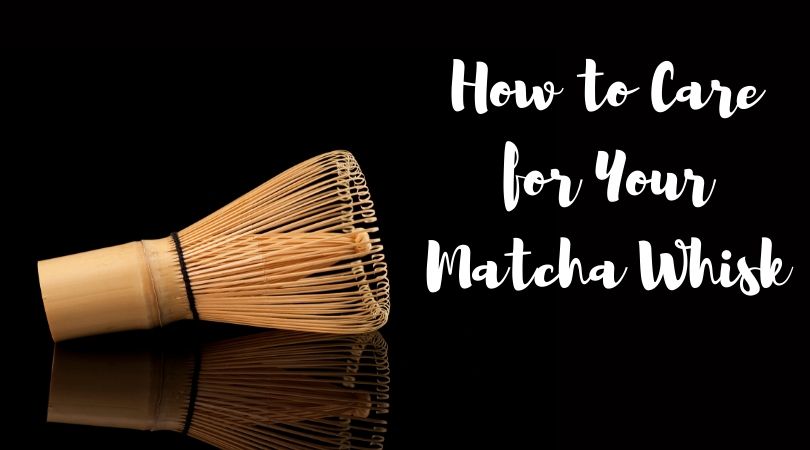I’d like to apologize to my first matcha whisk. I had no idea what I was doing! Years later I have learned the error of my ways and my trusty chasen lasts for much longer. Here are some tips to make sure that your matcha whisk stays in tip-top shape.
Before Use
It is important to soak the tines in hot water for a few minutes before using your chasen. This helps soften them and makes it much less likely that they will break during whisking. I usually just place it in a small bowl or cup while I am getting everything ready. The temperature doesn’t matter much but cold water does not work nearly as well.
Many bamboo whisks come packaged in a small plastic tube. This container is not meant for long term storage since the whisk will expand with use over time. I had so many customers at Teavana who broke the tines of their whisks by trying to cram them back into the container.
Treat It Gently
Chasens are not exactly fragile but treating them gently will make them last much longer. It is tempting to grind into the matcha powder, especially when you are getting started. This will result in shredded tines that break quickly. It takes practice but you’ll want to make a smooth motion in the shape of an M or W with the whisk just barely touching the bottom of the bowl. It’s all in the wrist!
Keeping It Clean
Washing your matcha whisk immediately after using is the most important step but only water should ever be used. Soaps and detergents damage your whisk and will be absorbed by the bamboo. Quickly rinse the whisk and use your fingers to gently remove any lingering matcha residue. An easy way to do this is to briskly swish the whisk in the water that you used to warm it up with. Do not let the whisk soak in water as this will cause it to expand and eventually split.

After Use
Once you’ve properly cleaned your whisk, you’ll want to make sure you let it air dry completely before storing it away. It is best to this with the tines facing downward so that excess moisture does not sit in the handle. I recommend drying your whisk on a kusenaoshi, otherwise known as a whisk holder. This helps the tines to keep their shape. Once it is totally dry, you can store the whisk however you would like. I keep mine in the pretty display box that it came in.
Replace It
As heartbreaking as it is, bamboo wears out and your whisk will eventually need to be replaced. Frayed and broken tines, splitting bamboo, and signs of mold are all indicators that the time has come. I definitely become attached to my teaware, including matcha whisks, but I try to look at it from the perspective of Ichi-go Ichi-e. This idiom is often translated as “one time, one meeting” and has a close association with the Japanese tea ceremony.

Thank you for such a useful post! I’m still getting to know my matcha whisk so the tips are going to come in handy!